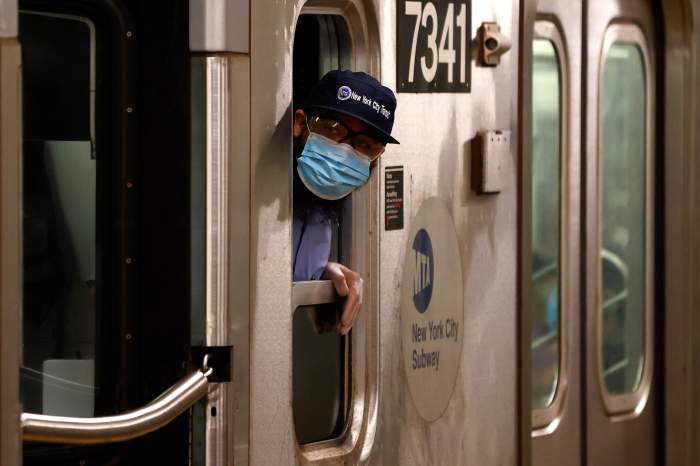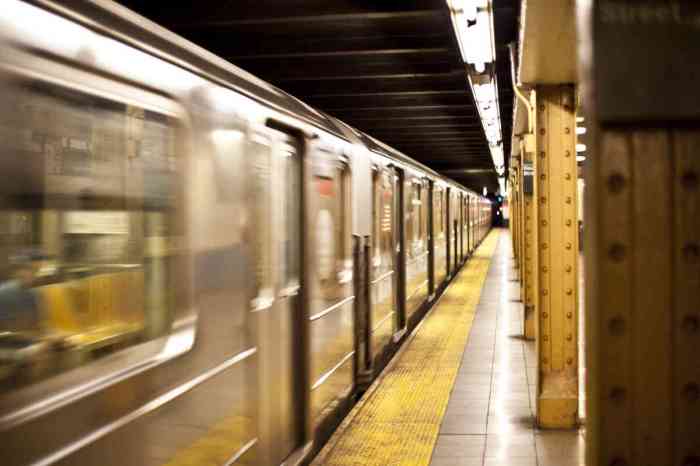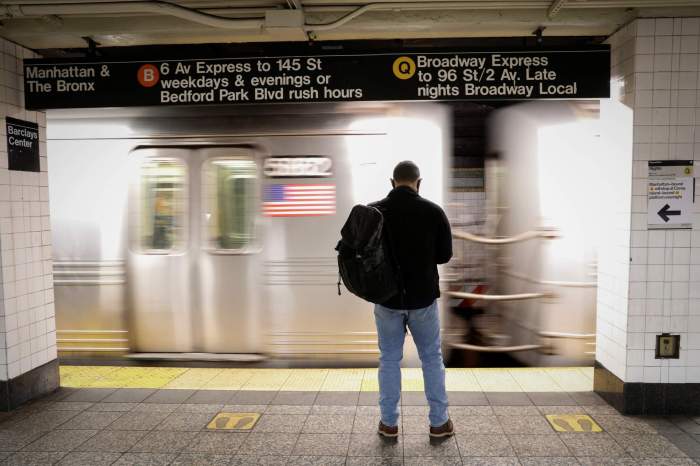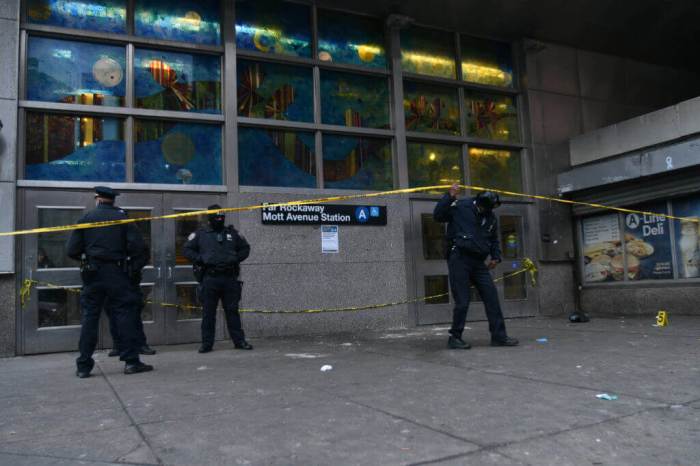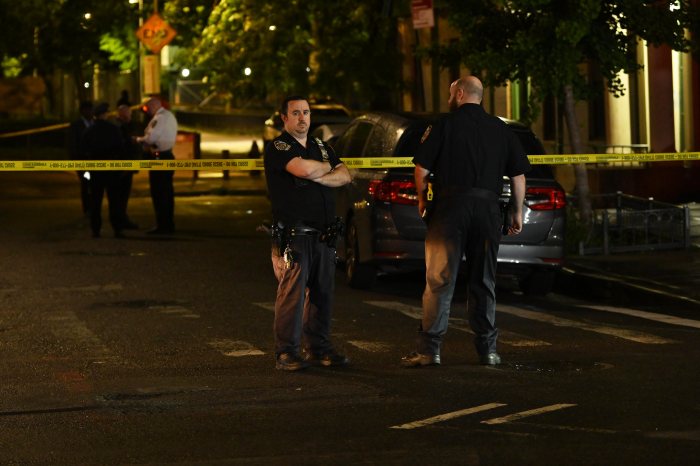Straphangers at the Flatbush Avenue-Brooklyn College subway station can now board a shiny new elevator, as construction of the lift at the southern terminus of the 2/5 line finally wrapped up this week.
The news of the elevator’s completion with be a welcome announcement for the Flatbush Junction area’s subway riders with physical disabilities or mobility issues, who had to schlep all the way to Church Avenue for five months, to enter and exit the notoriously inaccessible subway system by elevator — marking a significant mile-long trek to the station that’s three stops away.
The project was announced in June and commenced in July, and work was scheduled to be completed within six months but was finished early, the MTA said.
“Another on schedule MTA project!” acting MTA chair Janno Lieber said in a statement. “Projects like this prove the MTA’s project management strategies – like bundling – are working. The MTA is committed to building a 21st century fully accessible system that is the best way for riders to navigate the city.”
Most striking about the new elevator, located at the southern point of the busy intersection between Flatbush and Nostrand avenues, is that its previous metal framework has been replaced with glass, giving it a sleeker, more modern look. The renovation job included the replacement of the elevator cab and equipment in the cab, shaft, pit, and machine room, as well as the modernization of the CCTV and fire alarm systems and an upgrade to remote monitoring equipment to allow for more efficient repair service if the elevator went down.
The elevator was originally installed in 1997 as part of the MTA’s long, drawn-out compliance with the Americans With Disabilities Act, but had gone well past a hydraulic lift’s “useful lifespan” of about 17-and-a-half years. The elevator was in service 92.85 percent of the time in June, its last month of pre-renovation service, according to the MTA’s elevator performance dashboard; the benchmark for an elevator in working order is good service 96.5 percent of the time.
With work on the Flatbush elevator now complete, the MTA simultaneously announced that work began Wednesday on renovations of the elevator at Church Avenue on the same line. In a switcheroo, the MTA now advises straphangers in need of an elevator to travel to Flatbush Avenue-Brooklyn College to enter the system.
Joe Rappaport, executive director of the Brooklyn Center for the Independence of the Disabled, praised the ahead-of-schedule elevator unveiling and called it a positive development.
“I think that the MTA talks a lot about getting these projects doen more quickly, more efficiently, and you know, this is a sign that that can happen,” Rappaport said. “Who could kvetch about an elevator that gets done early.”
The Flatbush project was initially identified and funded in the MTA’s 2015-19 capital plan. The current, $51 billion 2020-24 capital plan in 2019 identified 21 elevators it intended to build in transit accessibility deserts in Brooklyn.
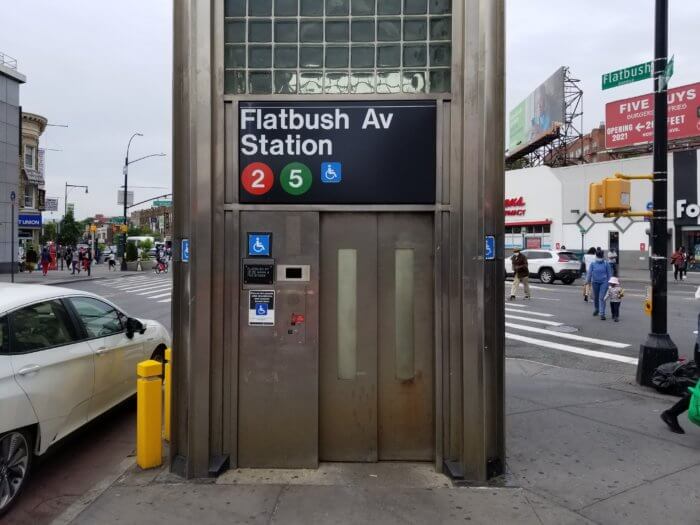
The comparatively non-snazzy old elevator at the stationPhoto by Ben Brachfeld
Last week, the authority approved contracts for a slew of elevator-building and renovating projects at Brooklyn subway stations, including Church Avenue and Sheepshead Bay on the B/Q, Kings Highway on the F, and Junius Street on the 3, as part of public-private partnerships. That contract also stipulated the replacement of the elevator at Euclid Avenue on the A/C. A separate contract that the Authority is scheduled to vote on would see a new elevator at the 8th Ave N stop and renovations at the Marcy Avenue J/M/Z stop and the Flushing Avenue J/M stop.
Additionally, the feds have committed greenbacks to building elevators at the labyrinthine Broadway Junction station, to make the transit hub accessible.
Rappaport said that while it was commendable to see projects be completed on time, several months out of commission was still something that riders should not be forced to burden; he argued the MTA should have enough elevators in its system that if one goes out, a straphanger with disabilities is not massively inconvenienced. “In an ideal world, elevators wouldn’t be out for months at a time,” he said.
He also noted that the MTA has not committed to a timeline to make the entire system accessible, and that until that happens, organizations like his will continue having to fight the Authority even if it starts regularly completing projects on time.
“Getting one elevator done ahead of schedule, all hats off,” Rappaport said. “Making a commitment for the entire system, that’s when the real applause will come in.”










